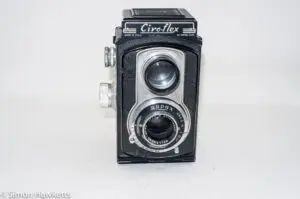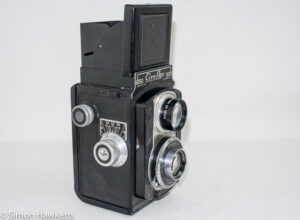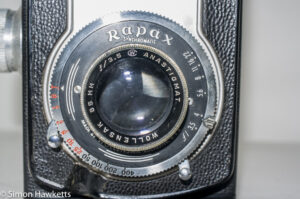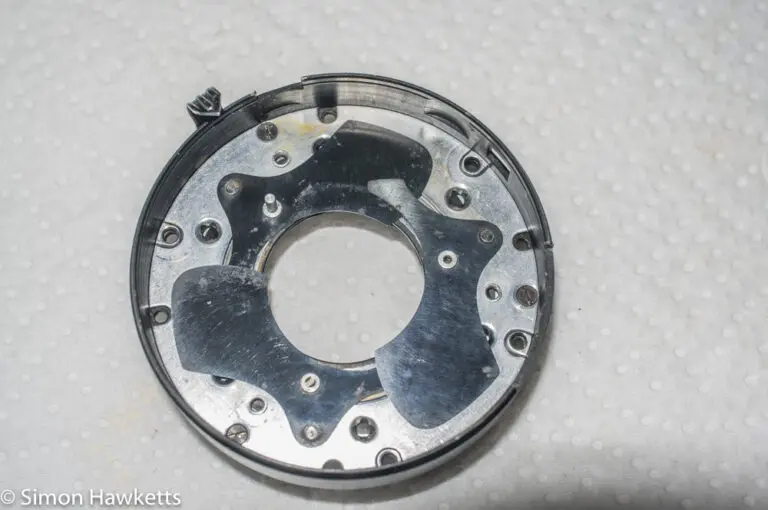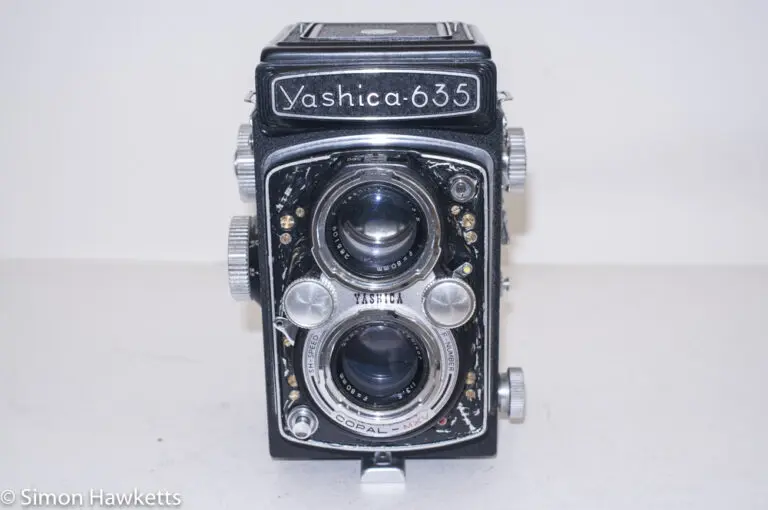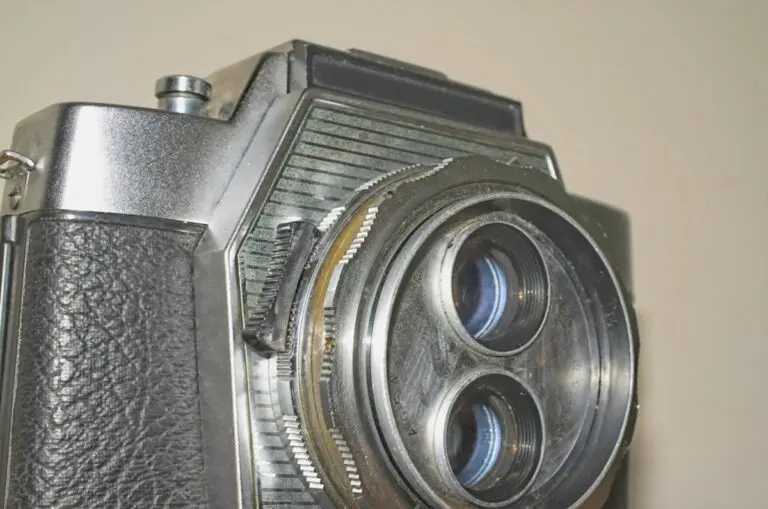Ciro-flex medium format TLR camera
The Ciro-flex was an American made, twin lens reflex camera which started to be made in the early 1940s. Originally the camera was made in Detroit but in 1947 the manufacturing moved to Delaware, and since my camera has written on it ‘Delaware, Ohio’, I know my example was made after that date.
My Ciro-Flex Camera
I paid £15 for my example of the Ciro-flex which didn’t seem to be too bad for what seems to be a reasonable condition camera.
It was sold as ‘requiring work’ because the viewing lens is clouded, the focus screen quite dull, and the taking lens has a small patch of fungus on the back.
When I received the camera I confirmed all the problems listed and one other which the seller also mentioned, that the aperture blades were quite stiff to operate. I noticed the first time I set the aperture it was difficult to move, and when I looked at the blades in the back of the camera as I moved the aperture ring I could see the blades flexing. This looked very much like a build up of oil which sticking the blades together, so I knew I would need to remove the shutter from the camera and strip it down and clean it up.
The shutter itself seemed to run nicely with all the speeds sounding right, including the slower speeds, which is quite unusual – especially with the aperture blades apparently gummed up with old oil and dirt.
The general cosmetic condition was pretty good, although dirty, and actually cleaned up nicely with a bit of effort.
Pictures of the Ciro-Flex
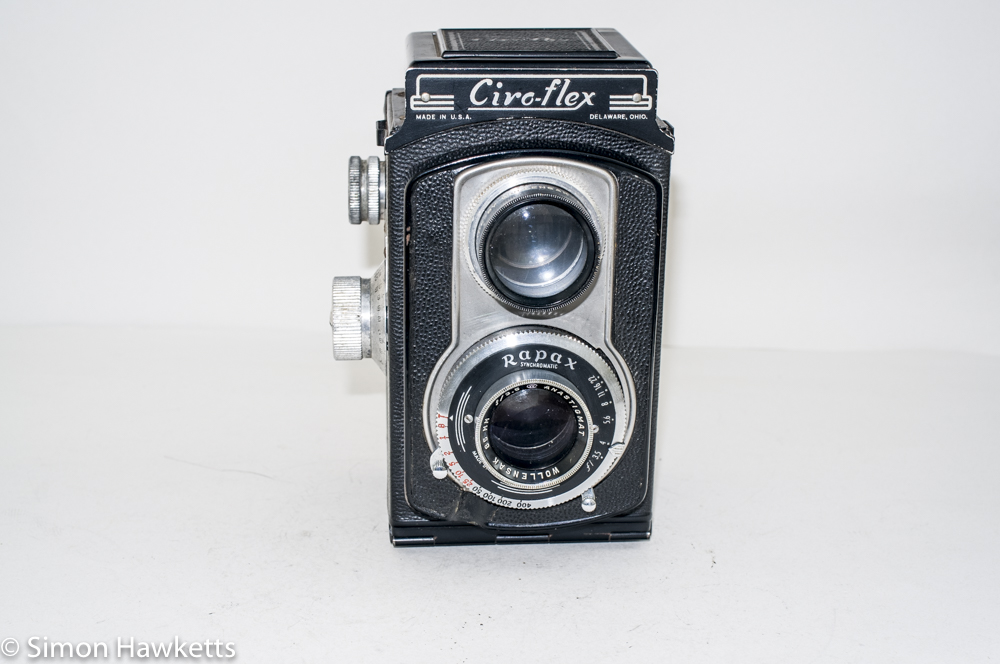
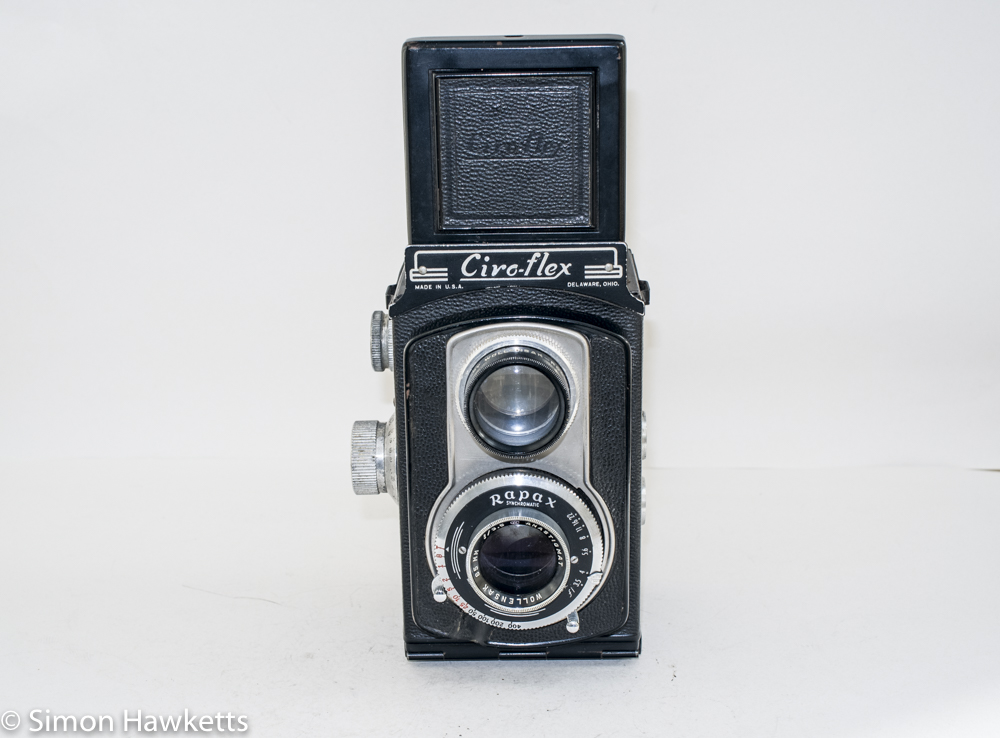


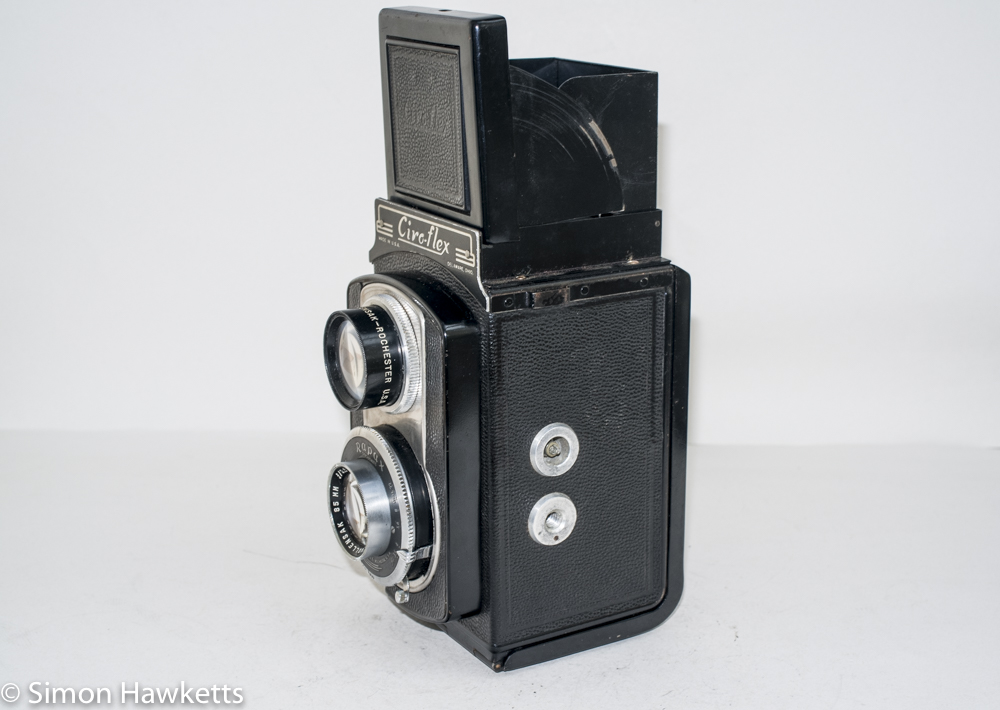
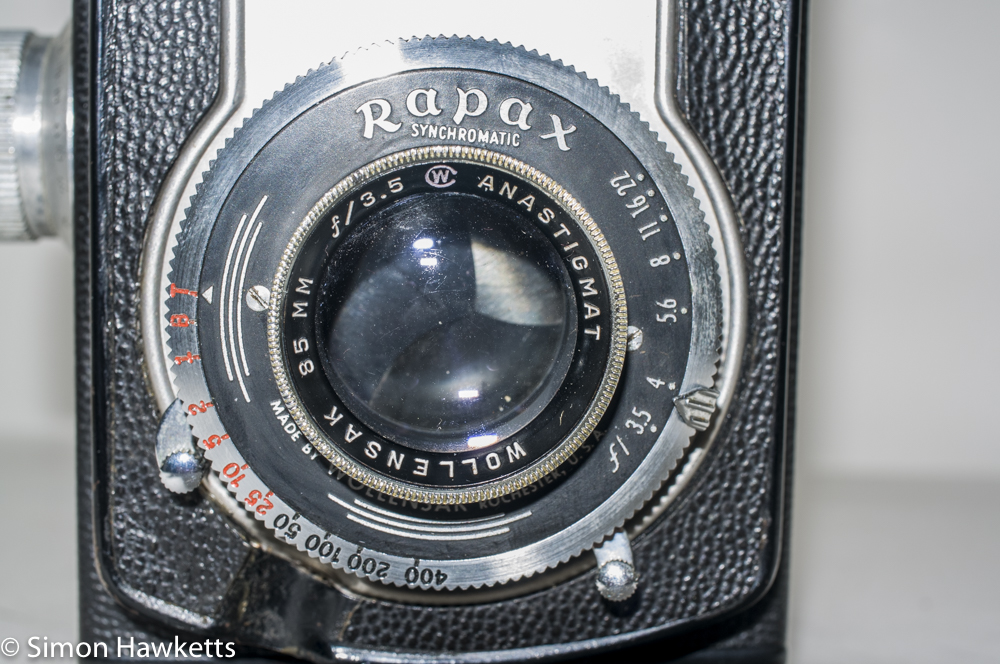
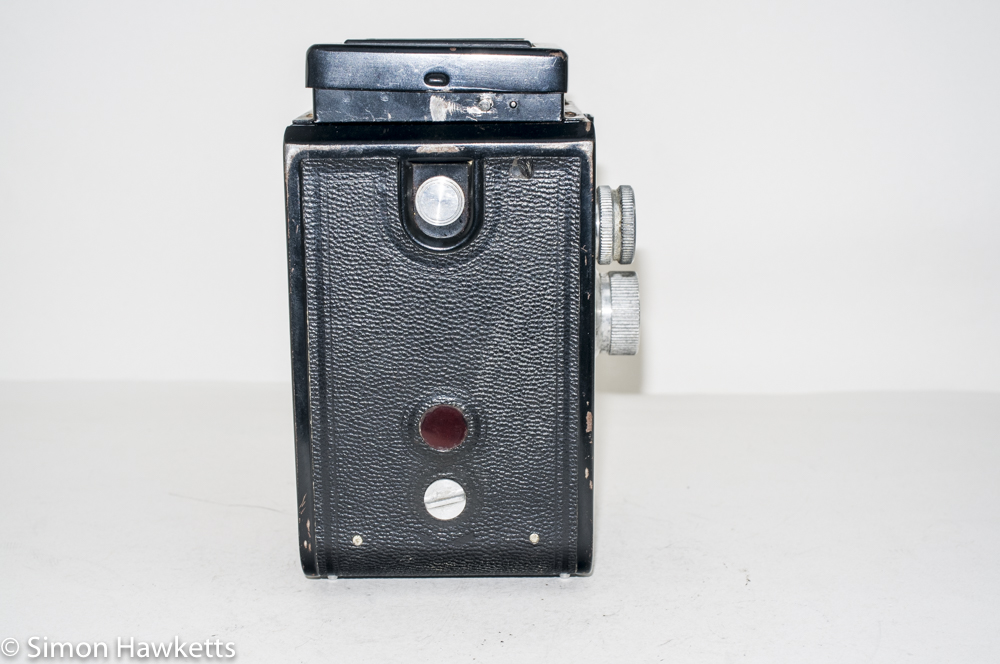
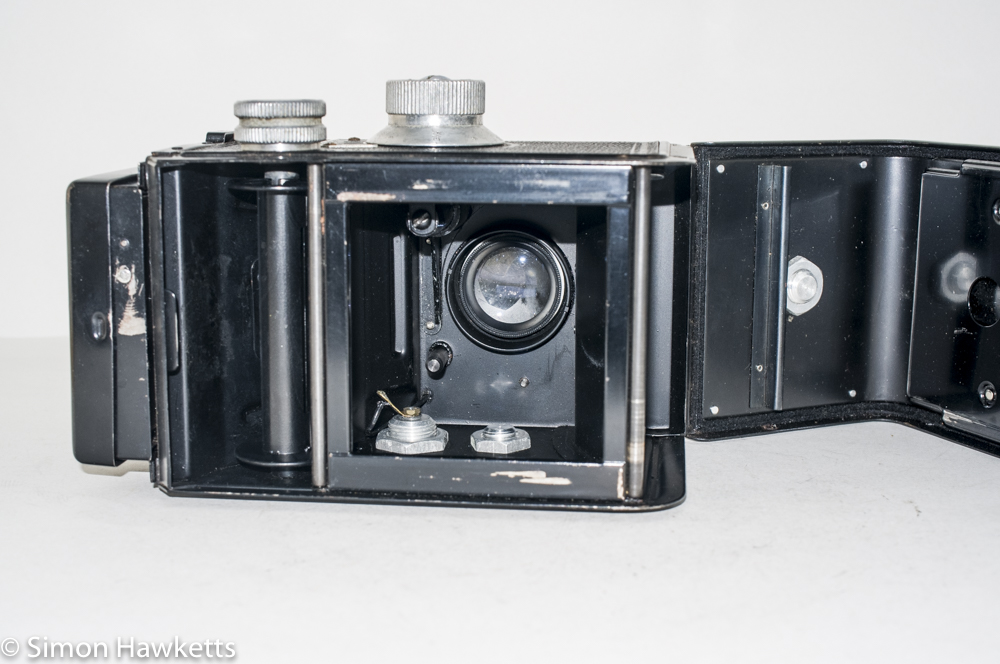
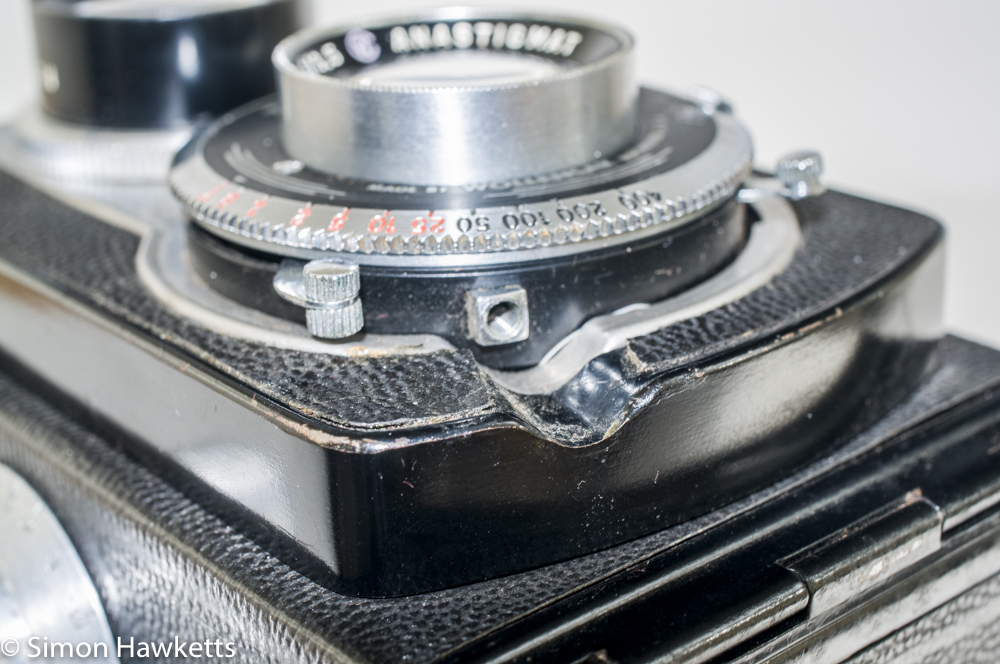
Ciro-flex Description
The Ciro-flex is quite a simple camera in design, with no complex frame counting or film advance mechanism and so, once the shutter and focus are correctly set, there isn’t much to go wrong with it. Although the viewfinder on old TLR cameras is often quite dull and a bit difficult to see, as long as the view is good enough to focus with, none of this affects the picture quality. In fact, if the lens is good, a medium format TLR is capable of very good results because of the size of the negative produced.
The one issue which all TLR camera designs suffer from is parallax error, which can lead to positional errors. The problem is caused by the different positions of the viewing lens and the taking lens – when you set the position of the subject in the viewfinder, because the taking lens is lower than the viewfinder lens the position is slightly different on the negative than you see in the viewfinder. Obviously, this is more pronounced as you get closer to the subject.
One way this problem can be addressed is with a parallax correction mechanism, and some versions of the Ciro-flex had this fitted. Basically, there is a linkage connected to the focus plate, and the linkage is used to move the position of the viewing screen to compensate for the position error. My camera actually had the linkage fitted to the focus plate, but there was nothing in the viewfinder to connect to.
At first, I thought the camera may have been rebuilt in the past with the wrong parts, but some research suggests the manufacturer actually removed the mechanism after a couple of models because it basically didn’t work very well!
As I implied above, the operation of the camera is remarkably simple. The film is advanced with a simple knob at the top of the camera, and the frame number is seen by way of a red plastic window in the back of the camera. This window has a cover which is normally left closed, but is opened as the film is advanced, so the numbers on the film backing plate can be seen.
Obviously, before you can take any pictures you need to load a film into the camera, and this is a slightly more fiddly task than loading a typical 35 mm camera.
Often there will be an empty film roll in the bottom of the camera and this needs to be moved to the top film compartment to act as the take-up spool for the film. With that in place, a new 120 film is placed in the holder at the bottom of the camera, the seal broken and the backing paper pulled over the film rollers and inserted into the take-up roll at the top.
Once everything is secure, the back is closed and the frame counter window opened. Then the film advance knob is turned until the number 1 appears in the window. The camera is then set ready for the first picture. When all the pictures are taken, the film is not re-wound, but simply fully wound onto the top spool and removed, sealed up with the sticky paper which is attached to the end of the roll, and it’s ready for processing.
Focusing is carried out using the knob on the side of the camera and composing the picture in the viewfinder at the top. The Ciro-flex has three options regarding composing the picture.
There is the ground glass viewfinder with a central circle and Fresnel screen, there is a pop-up magnifier in the viewfinder which can be used for fine focus and there is a ‘sports finder’ which involves pushing in the front of the viewfinder hood and using the hole at the back of the viewfinder to allow an eye-level view. If the sports finder is used, it isn’t possible to set the focus, so the camera would normally be set to use hyperfocal focusing.
The shutter on the Ciro-flex is not cocked by the action of winding the film and must be manually cocked prior to taking the picture. Because there is no interlock to stop you taking two pictures on the same negative, or missing a picture and winding the film twice, it is important when using this type of camera to have a procedure or checklist to make sure you do the same things in the same sequence every-time you take a picture.
Now my copy of the Ciro-Flex is fully working and has been cleaned up, I have a roll of Fujipro 160 colour negative film fitted, and I’m taking the camera out with me over the next few days to get some sample shots – once I have the film developed I’ll scan and publish the results.
Update: The pictures I took on the Ciro-Flex are published here.
Ciro-Flex Specification
- Ciro-flex 120 film medium format Twin Lens Reflex camera
- Rapax shutter with speeds of 1 sec to 1/400 sec + bulb and time
- Wollensak 85 mm f/3.5 lens
- Aperture settings of f/3.5 to f/22
- Manual film advance without frame counter
- Ground glass and Fresnel screen focusing screen
- Focusing magnifier
- Sports finder
- Cable release socket
- Synchronised for flash
- Tripod bush on bottom and side
- Manual available online here
Discover more from Everything Vintage
Subscribe to get the latest posts sent to your email.

